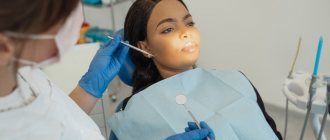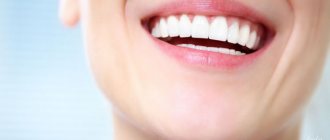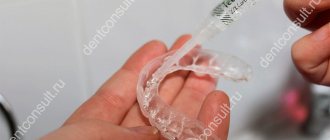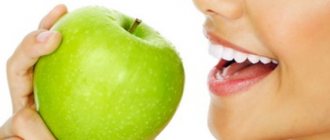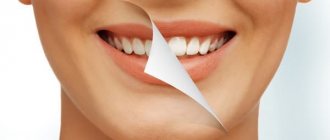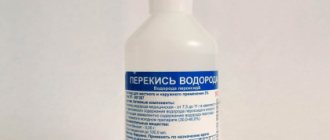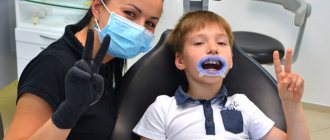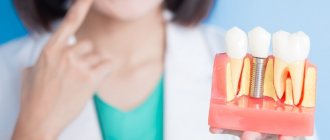The influence of tobacco heating systems, such as IQOS, on human health is now being actively studied, various hypotheses are put forward and tested. In particular, the issue of smoking has always caused certain problems with teeth.
In this article we will try to figure out whether it is possible to smoke IQOS after teeth whitening or other dental procedures, and how this type of smoking generally affects dental health. Dentists who have practice in this matter will help us with this. Let's start with the basics, with the influence of tobacco heating systems.
Is IQOS harmful to teeth?
The dangers of regular cigarettes have long been scientifically proven. There is evidence of irreparable damage to the health of smokers. A lot of life-threatening elements enter their bodies along with cigarette smoke. The harm of cigarettes is also visible in the oral cavity: teeth turn yellow and tartar appears.
However, not only smoke causes problems with teeth, but also severe temperature changes, from hot tobacco smoke to cool air. Such temperature changes negatively affect tooth enamel.
IQOS is much less harmful to teeth than regular cigarettes. Studies have shown that when using an electronic tobacco heating system, a person is exposed to 80-95% less harmful substances, this also applies to their penetration into the oral cavity.
The temperature of IQOS tobacco vapor is lower than that of cigarette smoke due to a special cooling element inside the sticks, as well as the absence of combustion.
Dentists note the following benefits of using IQOS:
- Dark brown plaque does not appear on the teeth. Resins do not penetrate into the oral cavity and do not affect the natural color of teeth. According to experts, cigarette smoke stains teeth 7 times more intensely than steam from IQOS.
- The risk of tartar formation is reduced. Brown plaque is considered the first sign of this problem. Since there is no dark plaque, the risk of stone formation is reduced.
- The risk of periodontal disease is reduced. The reason is the same: smoke does not affect the inner surface of the cheeks, oral cavity, or gums. In addition, the IQOS user does not experience such unpleasant sensations as dry mouth, burning, bitterness, and it is easier for him to practice oral hygiene.
- Implants do not fall out or be rejected. Considering that dental prosthetics is quite expensive, this is undoubtedly a plus.
What not to eat
- Beets, tomatoes, carrots;
- Citrus fruits, watermelon, mango;
- Dark berries;
- Coffee, tea, cocoa;
- Red and rose wine;
- Lemonade, fruit drink;
- Ketchup, soy sauce, etc.;
- Egg yolk;
- Jam, jam;
- Chocolate, candy, caramel;
- Spices and seasonings;
- Chips, crackers;
- Any other foods and drinks containing dye.
Important! If you consume an illegal food or drink, immediately brush your teeth or use mouthwash.
The essence of the whitening procedure
Teeth whitening is based on a couple of factors:
- Exposure to hydrogen peroxide entering the enamel and causing an oxidation process that destroys dyes.
- Ultraviolet, halogen or LED lamps and a laser beam speed up the reaction and make the procedure more effective.
After such an intervention, the teeth will become vulnerable:
- the enamel layer loosens, carious spots appear on it;
- sensitivity will increase;
- the likelihood of soft tissue irritation increases.
Proper dental care helps maintain the whitening effect for a long time and strengthen weakened enamel.
Changes in enamel color in smokers
In the process of smoking a cigarette, smoke enters the human body, which contains tar, nicotine and combustion products. They stick tightly to tooth enamel, staining it an unnatural color. Smokers often have yellow or brown teeth. In this case, localized areas of enamel staining in the form of spots or lines may be observed, indicating the most affected areas.
Features of stains on enamel:
in the spaces between the teeth - a sign of the formation of tartar, which accumulates a greater amount of coloring substances due to its porous structure;
along the gum line - a sign of recession, characterized by weakening of the gums, exposure of the neck of the teeth and inflammation of the soft tissues;
the inner side of the dentition - signals an increased acidic environment as a result of the interaction of saliva and cadmium sulfate (a product of burning a cigarette), the formation of tartar and inflammation of the gums.
Long-term smoking leads to the penetration of dyes deep into the tissue of the dental crown. Not only enamel is negatively affected, but also hard tissues up to dentin. Therefore, the only solution to restore a snow-white smile is professional whitening.
Bleaching and smoking IQOS
After bleaching, it is not recommended to smoke cigarettes, drink strong tea, coffee, or eat foods with dyes, as excessive staining of teeth is possible within one week. Your daily diet should include foods high in calcium and fluoride, namely dairy products, eggs and fish. And, conversely, from your daily diet you need to exclude foods that can stain the enamel, for example, coffee, berries, juices. It is also recommended to eat solid and hot foods. The longer the patient adheres to the diet and does not consume dyes, the longer the whitening effect lasts. After the procedure, you can ask your dentist whether you can smoke IQOS cigarettes after brushing your teeth, what products are allowed for consumption, and when to come for the next session. Usually the specialist asks you to refrain from smoking in all its forms for some time, including the use of electronic cigarettes and IQOS.
Scientists have conducted studies in which they found that in the case of regular smoking, after bleaching, the particles contained in cigarettes quickly darken the enamel. The same method was applied to the teeth using IQOS systems. In this case, virtually no darkening was observed.
However, to minimize the risk of unwanted effects on enamel, it is recommended to wait a few hours before using IQOS. You should give up regular cigarettes for a couple of days, ideally 3-5, and only then start smoking.
If it is impossible to quit smoking tobacco for a few days, then it is better not to undergo teeth whitening. Its effectiveness will decrease several times if you do not follow the recommendations of dentists in the future. Permission to smoke IQOS is obtained not only after bleaching. You can also find out from your dentist whether you can smoke IQOS after tooth extraction, treatment of caries, periodontitis, or pulpitis.
Most often, in addition to whitening, people ask the question of whether it is possible to smoke IQOS after tooth extraction. The dentists’ answer here is clear: no, because there is an open wound in the mouth, which is not recommended to be exposed not only to smoke, but also to steam. You should distract yourself from the thought of smoking for at least 2-3 hours.
After cleaning, you should refrain from smoking IQOS for 2 hours, since as a result of removing tartar, an unprotected gap sometimes appears between the tooth and gums.
Reviews from users of the electronic tobacco heating system indicate isolated unpleasant sensations that occur when consuming IQOS immediately after brushing your teeth, but these are rather personal impressions.
Thus, using IQOS is much less harmful than consuming regular cigarettes. This applies to general health and the direct impact of IQOS on teeth. It is important to follow the recommendations of dentists and not harm your own health.
conclusions
In general, if you are concerned about the aesthetic beauty of your teeth, I advise you to watch the webinar and draw your own conclusions. As for me, I will definitely go to the dentist for a cleaning and start tracking the results.
This is why I also love IQOS: no smoke, less odor, no ash or burnt holes. I can also change my IQOS 3 to suit my image - on the official IQOS website you can buy 12 multi-colored caps and the same number of side panels. In total there are more than 500 combinations! Change yourself, and IQOS will change with you.
Oral care
In addition to proper nutrition, we follow the rules of hygiene:
- We brush our teeth with a soft-bristled brush so as not to increase sensitivity.
- The paste should not contain abrasive components that damage the enamel layer. For two to three weeks after whitening, use a sensitivity-reducing toothpaste to brush your teeth, then switch to fluoride-containing products to strengthen your enamel and protect it from tooth decay.
- After your next meal, treat your teeth with an irrigator or floss - make it a habit.
- Use rinses that do not contain chlorhexidine, which stains enamel.
- Visit the dentist's office several times a year.
Electronic smoking devices are an alternative option for the most heavy smokers who cannot part with cigarettes. They are less harmful to the human body in general, and a limited number of elements enter the mouth that cannot have a significant effect on enamel pigmentation, the formation of plaque, tartar, and the appearance of periodontal disease.
You should listen to the recommendations of doctors and choose the safest smoking option, which significantly reduces the risk of general disease and the oral cavity in particular.
Myth #4: An electric toothbrush is more effective than a regular toothbrush.
Experienced dentists assure that buying an electric toothbrush does not guarantee high-quality teeth cleaning. In fact, there is not much difference. The main rule to follow is to brush your teeth thoroughly, for at least two minutes. The brush should be held at an angle of approximately 45 degrees to the teeth and, without pressing too hard, clean the front, back and chewing surfaces of the gums.
Some dentists say that an electric toothbrush removes plaque more effectively. In fact, many believe that the very fact of an electric toothbrush in the mouth is enough for a positive effect, they relax and forget about thoroughness. Also, owners of electric brushes are less likely to change attachments to save money, because they cost more than a regular brush. What's really great about an electric brush is that it makes it easier for people with musculoskeletal and joint diseases, such as arthritis, to maintain dental hygiene.
Ways to get rid of plaque
Some smokers believe that it is impossible to get rid of the yellow tint of teeth. This is wrong. It is quite possible to whiten yellowed enamel, and you can even try to do it at home. However, if the case is advanced, and the plaque has turned from yellowish to brown or even black, then folk remedies are likely to be ineffective. A dentist will help you thoroughly clean your teeth from old pigmentation.
Home whitening methods
When choosing methods for getting rid of plaque, you need to understand that home procedures will take much more time than professional cleaning at the dentist.
To remove plaque at home, you can use the following methods:
- Using baking soda. The abrasive properties of this substance allow you to effectively remove plaque and polish tooth enamel. To achieve results, you can use baking soda in its pure form or add it to your usual toothpaste. You can use this method no more than twice a week.
- Lemon peel. Rubbing the surface of the teeth with the crust of this fruit helps lighten the enamel.
- Cleaning with activated carbon. Crushed charcoal is applied to the brush and the teeth are cleaned with gentle movements. The method is highly effective, however, the efforts made should be controlled to avoid damage to the enamel.
- Using tea tree oil. This product is distinguished by its safety and has an additional antibacterial effect. After cleansing your teeth with regular toothpaste, apply a few drops of oil to your brush and gently brush your teeth again. Then rinse your mouth with water and a few drops of lemon. After the procedure, you may feel a slight numbness.
- Hydrogen peroxide. A few drops of peroxide solution are applied to a cotton swab and wiped over the teeth. After this, you need to perform hygiene with toothpaste and then rinse your mouth thoroughly. Peroxide has a pronounced effect, but has an adverse effect on the enamel.
- Factory products. Effective is the use of various whitening gels applied to the teeth using a special tray. Lightening agents in the form of strips have a similar effect. When using these devices, you must be careful and strictly follow the instructions in the instructions.
In order to avoid plaque caused by a bad habit, you need to brush your teeth after every cigarette you smoke. Unfortunately, this opportunity does not always exist. Regular use of home whitening methods will help get rid of fresh plaque and prevent it from acquiring a dark shade.
Features of whitening with soda
When wondering how to remove plaque on teeth after smoking, many people opt for baking soda.
The method is really effective, although there are contraindications, such as:
- tendency to bleeding gums;
- increased sensitivity of enamel;
- enamel pathologies (fluorosis, hypoplasia);
- carious infections.
If the listed contraindications are absent, you can try this type of whitening. Procedure steps:
- Prepare soda in the form of a dry powder or a paste-like mixture with water. You will also need a toothbrush.
- Baking soda must be applied to the toothbrush (if using dry powder, the brush must be moistened with water).
- Brush your teeth, being careful and trying not to get it on the oral mucosa.
- Rinse your teeth thoroughly.
This method should not be used more than twice a week. Baking soda can be used not in its pure form, but added to regular toothpaste.
Professional teeth cleaning after smoking
Advanced forms of plaque on teeth are best left to the dentist. A professional approach to lightening enamel after smoking includes two types of procedures:
- Professional hygiene. The procedure is carried out using soft abrasive cleaning and ultrasonic methods. During the manipulation process, teeth are even removed from old plaque and tartar.
- Enamel whitening. This method is used when the natural color of the teeth is not satisfactory, and the patient wants to have a perfectly snow-white smile.
Sometimes combined methods are used, combining them with subsequent remineralization of tooth enamel.
Features of plaque from tobacco smoke
Plaque that appears on teeth can be of different colors:
- yellow and brownish;
- white;
- black;
- green.
Such plaque, if removed in a timely manner, does not pose any particular danger. It can be removed during regular brushing with a toothbrush. Green plaque is rare and mainly appears due to damage to the pellicle (the protective layer of the tooth located on the surface of the enamel). Also, this shade of plaque can be caused by a fungal infection of the oral cavity.
Yellow and brown plaque appears due to tooth pigmentation caused by smoking, as well as from excessive consumption of strong tea and coffee. This type of plaque is difficult to remove on your own. The easiest way in such a situation is to have it professionally cleaned by a dentist. Black plaque is an advanced form of pigmentation, which initially had a yellow or brown tint.
Prevention
It is always easier to prevent pathology than to treat it. In order to avoid the appearance of plaque, it is best to get rid of the bad habit of smoking. If this cannot be done, then you need to at least minimize the number of cigarettes you smoke. Additional preventive measures are:
- thorough dental hygiene at least twice a day using a toothbrush, floss and mouthwash;
- timely replacement of the toothbrush;
- rinsing the mouth after every meal or smoking;
- control over the amount of coffee and strong tea consumed;
- alternating different types of toothpaste;
- regular oral hygiene at the dentist.
It is better to solve the problem at the stage while the above simple recommendations are effective. If you do not give up the bad habit, as well as neglect preventive measures, then plaque after smoking can lead to serious oral diseases.
Everyone wants to be the owner of a beautiful snow-white smile. This is why professional teeth whitening has become so popular recently. But in order for the result to be maximum and last a long time, you need to follow some rules for oral care. If you do not follow the specialist’s recommendations, fairly soon after the procedure your teeth will return to their previous shade.
